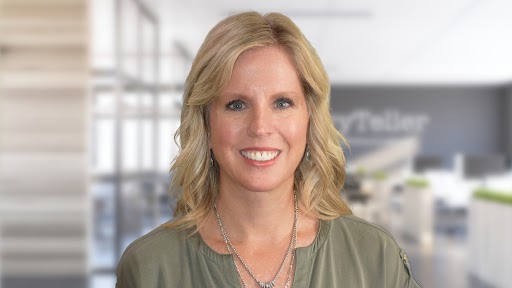Meet The Team: Lisa Schmidtke
At StoryTeller Media + Communications, Lisa Schmidtke wears many hats beyond her title as a "Digital Advertising and Website Specialist." She is the...
“2017 is going to be an inflection point when it comes to online video” according to John Arms, CEO of Minneapolis-based Wingnut Advertising. Arms backs up his claim by explaining that video has finally reached a point where the value is apparent and the obstacles, whether they be cost or time, have gone away. And Arms’ opinions are backed by his professional experience and industry data. According to the Interactive Advertising Bureau, video spending on original digital content increased 114 percent since 2014, yet many marketers still struggle to harness the power, and nuances, of online video.
Arms, who started Wingnut Advertising with partner Greg Dutton in July of 2004, has navigated Wingnut from its roots as a traditional advertising agency into the complex and fickle world of digital. Today, along with a third partner, Jim Cousins, and a team of 15 strong, Wingnut boasts a client roster that features the likes of Amsoil, Bremer, AccentCare and DairiConcepts. They are light years away from their humble start as a basement business with $350 and a used Apple computer. Arms and his team have helped guide Wingnut’s clients from a pre-YouTube world to leveraging online video as a powerful advertising tool. While traditional advertising will continue to play a role in Wingnut’s work, Arms also understands the gap that online video fills for brands who strive for a customer engagement play that television advertising cannot fill.
The power of online video lies in its ability to communicate in a truly authentic manner. This is where the greatest opportunity exists and where the greatest “sins” have gathered in the past five to 10 years, according to Arms. Just as some businesses have learned that online video cannot be produced in the same spirit as traditional advertising, many have not.
“People took online video as 'oh we’re gonna kinda use it as mass awareness in this environment.' And it doesn’t work in this environment,” said Arms. Unlike television advertising, online video provides businesses a channel to reveal parts of their work that are authentically true. Pointedly, he adds, “the sniffers are stronger than ever for BS.”
There are many obvious similarities and, at the same time, glaring differences between online video and television advertising. From how the content is produced to how it can be measured, the key differences that marketers should understand are also abundant. First, when it comes to the qualitative aspects of online video, Arms breaks it down this way, “online video also has the ability to be a lot more informative, but the people are looking for things very specific and that’s how they get there. Their search is a big part of it. I’m looking for this thing to buy or this thing to do or this experience to have. Online doesn’t have to work so hard on the brand side of things as interruptive advertising does. It allows brands to be more informative.”
Keep in mind, years ago when ad agencies produced a television spot for a client. the costs were astronomical compared to the expense of producing a short online video today. This was due to the medium for which it was intended and the demand for it to be “perfect,” since the commercial would be produced one time and seen repeatedly via an expensive television ad spend.
First and foremost, online video has the ability to be more informative than traditional advertising methods. Because it is used in either social media settings or discovered through search, video meets the customer where they are spending time online. However, since these people are choosing to watch the video, or actively seeking that content through search engines like Google, they are typically searching for helpful information and not a commercial. Think of it, when was the last time you “Googled” a commercial for a product or service in which you’re interested?
“Mostly what we tell our clients is what we’re doing is we’re meeting your customer where they are,” says Arms. “We’re meeting them in the time period and the time frame which they’ve chosen and they’re telling us how they want to be spoken to and engaged with. And so let’s work with that.”
This leads to what is one of the most dynamic aspects of digital marketing and online video — all of the content is highly measurable. Arms’ number one rule is, “don’t do anything you cannot measure,” and also he urges marketers to measure meaningful key performance indicators (KPI).
"I hate KPI that say 'hey, here's how much awareness we got' and that's as far as it goes. That actually pisses me off."
“I hate KPI that say ‘hey, here’s how much awareness we got’ and that’s as far as it goes. That actually pisses me off. I think that’s irresponsible. I call that a sin of the industry that I have to apologize for and it bugs me.” Arms fervently believes the agency’s role is to act as consultants who have a responsibility to help clients create customer loyalty while hitting sales, awareness, and engagement objectives.
Through digital tools such as online video, deep measurement is possible, and while not every campaign or project will be a success, Arms reminds us that even wild “misses” can be a meaningful metric that can lead to better decision-making in the future.
“Never forget that any time a consumer either doesn’t say anything or reacts, they’re talking to you, they’re telling you something.” This is what the folks at Wingnut refer to as their “rolling focus group,” pointing to the fact that all data can provide insights and that content should constantly be measured and optimized.
Rather than obsess over specific demographics, Arms says his team has become students of anthropology — constantly looking for patterns of customer behavior and mindset. The key is, then, to understand what information will be helpful for his client’s customers before the customer even realizes it.
“We have to evolve. It’s not really me saying this. The consumer is speaking, and as (serial entrepreneur) Gary Vaynerchuck says, and I love listening to him, 'the market is the market is the market is the market.' You can’t change that.”

At StoryTeller Media + Communications, Lisa Schmidtke wears many hats beyond her title as a "Digital Advertising and Website Specialist." She is the...

Did you know millennials now outnumber baby boomers and have become the largest generation in the U.S., representing more than a quarter of the...

Do you still expect people to find your club by typing "golf club near me" into their favorite search engine? That might have worked in the past, but...